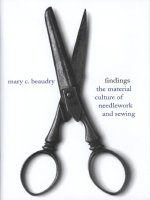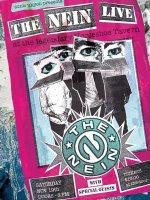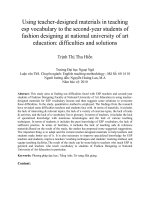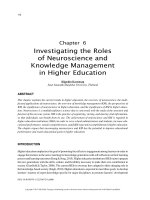Art Education 764 (5 Credits) Investigating Material Culture Myth, Mystery and Meaning Two Meetings a Week for Two and One-Half Hours Each
Bạn đang xem bản rút gọn của tài liệu. Xem và tải ngay bản đầy đủ của tài liệu tại đây (238.34 KB, 12 trang )
Art Education 764/Spring 2007 1
Art Education 764 (5 Credits)
Investigating Material Culture: Myth, Mystery and Meaning
Two Meetings a Week for Two and One-Half Hours Each
Dr. Georgianna Short, Associate Professor
Office 345 Hopkins Hall
Telephone: 614.292.0265
Email:
Office Hours: Tuesday 1:00 – 3:00
or by appointment
Course Description
Art Education 764 investigating Material Culture: Myth, Mystery and Meaning is
transdisciplinary in nature as it addresses objects that span centuries from Egyptian
pyramids to yesterday’s 501 Jeans. The origin of objects, their use and meaning for the
people(s) who made them, their life cycle and role in museum displays will be explored.
Information will be shared through dialog, assigned readings, artifacts, guest speakers and
site visits. This course serves as the foundation course for the Graduate Interdisciplinary
Specialization in Material Culture Studies. Students will be expected to complete short
response assignments, reflective papers and in-depth investigation into an object of
personal interest.
Course Goals
The primary goal in this course is to develop students’ awareness to the relationship
between people and the objects they create and use in both the past and the present. To
investigate these important aspects of cultural objects student’s will:
1. Situate their understanding of Material Culture within the theoretical perspectives of
Objectification (Tilley, 2006) and Habitus (Bourdieu, 1971-2002).
2. Evaluate the relationship between clothing, personal identity and Material Culture.
3. Consider why commonplace items may be included in Material Culture Studies and
what these objects tell us about the lives of people who used them.
4. Develop an awareness that objects make the person inasmuch as the person makes
the object.
5. Compare vernacular and monumental architecture’s role in Material Culture Studies
and discuss the moral and ethical problems associated with conservation, restoration
and preservation of architectural structures.
6. Contemplate whether and how the meaning of objects may change when placed in a
museum or private collection.
Attendance
Regular attendance is expected. Two unexcused absences will lower a final grade by onethird letter. To be excused, an absence must be reported explaining the reason for the
absence, preferably before the class meeting. Excused absences must be supported by
appropriate written documentation. It is the student’s responsibility to meet with the course
instructor to discuss extended periods of absence due to medical problems.
Plagiarism Policy
Copying/claiming someone else’s words, ideas or works as your own is considered
plagiarism. A proper reference style should be used when using words or ideas of others.
Suspected cases of plagiarism will be reported immediately to the Committee on Academic
Art Education 764/Spring 2007 2
Misconduct. The Committee regards academic misconduct as an extremely serious matter.
If in doubt, ALWAYS CREDIT YOUR SOURCE. Do not hesitate to consult me with questions
about paraphrasing, quoting or collaborating with other students in writing a paper.
Discussion/Participation
Discussion requires more than just talk. You should pay attention and listen to others, ask
questions of your peers and the instructor, engage your peers in student-to-student cross
talk, take responsibility for picking up the dialogue when we hit silences or points of
disagreement, and help keep the conversation on track. This will help keep the discourse in
the class moving in a democratic direction, where a variety of ideas, theories, and
interpretations coexist and help inform one another.
Your participation includes being prepared and offering thoughtful comments throughout the
course. Participation also means that you give your full attention during the class
discussion, individual and group presentation and guest lectures by asking questions and
providing feedback afterward.
Discussion, participation, active engagement in the course materials, and characteristics will
be assessed each class session. Failing to pay attention, not contributing to discussions, or
exhibiting distracted or distracting behavior (including, but not limited to using electronic
devises for non-course related activities, reading or engaging in discussion about non-course
related material, or acting inappropriately with or having disregard for students, guests, or
the instructor) during class will negatively impact your grade. If there is any reason that you
cannot fully participate in class, please let me know as soon a possible so we can discuss
your options.
Disability Statement
Any student who feels he or she may need an
accommodation based on the impact of a disability
should contact me privately to discuss his or her specific
needs. Students with documented disabilities should
contact the Office of Disability Services at 614-292-3307,
or visit 150 Pomerene Hall, to arrange accommodations.
Papers in Response to Assigned Readings and Site Visits
Papers in Response to Assigned Readings: You will be given a set of questions
to guide your response to each set of readings. Sometimes you will be asked to answer
each question, other times, the questions will serve as prompts to stimulate your own
response. These papers are to be no more than one page in length double spaced.
Papers in Response to Site Visits : After participating in each site visit, you will
be asked to write an in-depth reflective response paper about your experience. These
papers are to be no longer than three pages double-spaced.
Final Paper: The final paper represents individual research on an object of personal
interest to the student. Findings will be shared orally with class members and reported in a
research paper between 15 – 20 pages in length, double spaced, include a Bibliography or
Reference Page and follow a consistent publication style (e.g., A.P.A., M.L.A.).
All papers should be written using a 12 point Times or Times New Roman font. Pages should
be numbered and stapled as appropriate.
Art Education 764/Spring 2007 3
Evaluation
Class Participation
15 points
Weekly Reflections
64 points
Final Oral Presentation (no more than 25 minutes)
10 points
Final Paper (20-25 pages)
30 points
TOTAL
100 Points
Grading Scale
Grade
A
AB+
B
BC+
C
CD+
D
E
Points
93-100
90-92
87-89
83-86
80-82
77-79
73-76
70-72
67-69
63-66
62 and below
Readings are Available in a Course Pack Available At
Grade-A Notes Copy Center
72 East 17th Street
614.299.9999
Art Education 764/Spring 2007 4
Course Schedule
Please note that course schedule may be subject to change.
Class 1: Discussion - What is “Material Culture”?
*Reading Assignment for Class 2:
statements
Studies
Handbook of
Bolin, P.E. & Blandy, D. (2003). Beyond visual culture: Seven
Of support for Material Culture Studies in Art Education.
in Art Education, 44(3), 246-263
Hosking, J. (2006). Agency, biography and objects. In C. Tilley, W.
Keane,S. Kuchler, M. Rowlands, & P. Spyer (Eds.),
Material Culture, (pp. 74-84). Thousand Oaks, CA: Sage.
Prown, J.D. (1996). Material/culture: Can the farmer and the cowman
still be friends? In W.D. Kingery (Ed.). Learning from things:
Method and theory of Material Culture Studies (pp. 19-30).
Washington, D.C.: Smithsonian Institution Press.
*Response Paper:
Bolin, Hosking, & Prown approach the study of Material Culture in three
different ways. Compare these three approaches and describe the one
that represents the best “fit” with your thinking on the subject. Please
provide specific examples.
Class 2: Discussion - The Meaning of Things
*Reading Assignment for Class 3:
Csikszentmihalyi, M., & Rochberg-Halton, E. (1999). The meaning
of things: Domestic symbols and the self (pp. 1-32). UK:
Cambridge University Press.
*Response Paper:
Explain why Csikszentmihalyi & Rochberg-Halton claim that people
make things but things also make people. What does symbolism
have to do with this transactional relationship?
Class 3: Discussion - Philosophical Underpinnings of Material Culture
Habitus:
Ashgate.
*Reading Assignment for Class 4:
Pinney, C. (2006). Four types of visual culture. In C. Tilley, W. Keane,
S. Kuchler, M. Rowlands, & P. Spyer (Eds.), Handbook of
Material Culture, (pp. 131-144). Thousand Oaks, CA: Sage.
Tilley, C. (2006). Objectification. In C. Tilley, W. Keane, S. Kuchler,
M. Rowlands, & P. Spyer (Eds.), Handbook of material
culture, (pp. 60-73). Thousand Oaks, CA: Sage.
Bourdieu, P. (2002). Habitus. In J. Hiller & E. A. Rooksby (Eds.).
A sense of place (pp. 27-36). Aldershot, England:
Art Education 764/Spring 2007 5
*Response Paper:
Objectification and Habitus provide two ways of thinking about Material
Culture. Please answer the following questions:
1. How do these two approaches differ?
2. In your view, can one be “enfolded” into the other? Please
explain.
Class 4: Discussion - Sensory Elements of Material Culture
*Reading Assignment for Class 5:
Howes, D. (2006). Scent, sound and synaesthesia: Intersensoriality
and
Material Culture theory. In C. Tilley, W. Keane, Kuchler, M.
Rowlands, & P. Spyer (Eds.). Handbook of Material Culture.
(pp. 161-172). London: Sage.
*Response Paper:
It is somewhat difficult to believe that Material Culture Studies
encompasses the senses such a scent and sound. Explain why you
think
Howes
(and others) believe “multisensoriality is
embedded in the
materiality of human existence.”
Class 5: Discussion - The Multi-sensory Experience of Material Culture
*Reading Assignment for Class 6:
Young, D. (2006). The colours of things. In C. Tilley, W. Keane, Kuchler,
M. Rowlands, & P. Spyer (Eds.), Handbook of Material Culture,
(pp. 171-185. London: Sage
*Response Paper:
Explain how Young connects color and Material Culture. What other
functions does color perform in Material Culture?
Class 6: Discussion - Built Environment and Vernacular Architecture
*Reading Assignment for Class 7:
CA:
people.
29,
Preston-Blier, S. (2006). Vernacular architecture. In C. Tilley,
W. Keane, S. Kuchler, M. Rowlands, & P. Spyer (Eds.),
Handbook of Material Culture (pp. 230-253). Thousand Oaks,
Sage.
UNESCO (2006). World heritage today and tomorrow with young
Retrieved November 29, 2006 at
/>UNESCO (2006). World heritage information kit. Retrieved November
2006 at />*Written Response::
What is the difference between vernacular and monumental
architecture?
architecture?
Why do you think UNESCO is interested only in monumental
Is The World Heritage List of value in your opinion? Please explain.
Art Education 764/Spring 2007 6
Class 7: Discussion - Ancient Materials: Keys to the Future
*Reading Assignment for Class 8:
Short, G. (2005). Sustainability of Material Culture in the post-modern.
The International Journal of Environmental, Cultural,
Economic &
Social Sustainability, 1(4), 1-9.
Short, G., Erickson, M., & Cunliffe, S. (1999). Valuing and conserving
built environment. In J.K. Guilfoil & A.R. Sandler (Eds.).
our
Built
environment education in art education (pp. 37-50). Reston,
National Art Education Association.
VA:
*Written Response:
What are some differences between methods used to move the Temple
Ramses II and those used to move the Temple of Zahng Fei.
Describe the moral, ethical, and practical issues raised by these
of
practices.
Class 8: Discussion - Theory to Practice
*Site Visit One:
Visit one of the homes used as part of the “Underground Railroad” for
slaves seeking refuge in the Northern United States and
Canada.
or
Visit the Hopewell Mound Structures in Newark, OH.
*Written Response:
Complete a two or three page paper describing how these sites
“count” as
“Vernacular architecture”. Support your statements with quotations
from
previously assigned readings from Classes’ Six and Seven.
Class 9: Discussion - The Useful and The Mundane
*Reading Assignment for Class 10:
arts
Material
KA: University
St. George, R. (2006). Home furnishing and domestic interiors.
In C. Tilley, W. Keane, S. Kuchler, M. Rowlands, & P. Spyer (Eds.),
Handbook of Material Culture, (pp. 221-229). Thousand Oaks,
CA: Sage.
Ames, K.L. (1988). The stuff of everyday life: American decorative
and household furnishings. In T.J. Schlereth (Ed.),
culture: A research guide (pp. 79-112). Lawrence,
Press of Kansas.
Art Education 764/Spring 2007 7
*Written Response:
Material
everyday.
How important is the study of “everyday items” to understanding
Culture in your opinion? Select an everyday item that you use
How would your life change if this item were removed from your
possession?
Class 10: Discussion - Issues of Personal Space and Privacy
*Reading Assignment for Class 11:
Way, J. (2004). Reterritorialization and whispers form the walls.
Journal
of Material Culture, 9(3), pp. 219-237.
Garvey, P. (2005). Domestic boundaries: Privacy, visibility and the
Norwegian window. Journal of Material Culture, 10(2), pp. 157176.
*Written Response:
What does privacy have to do with Material Culture? How important is
privacy to you? How would you feel if you and those around
you had
absolutely no privacy? Would others think differently of you? Please
explain.
Week 11: Discussion - Cloth and Clothing
to
Invited Speaker: Gayle Strege, Curator of Historic Costume and Textiles Collection,
The Ohio State University will discuss the Collection and methods used
research various items.
Class 12: Discussion - Fabrics and Fibers
*Site Visit Two:
Field Trip to the University’s Historic Costume and Textiles Collection
where students will conduct an in-depth investigation of costumes,
dress,
fabrics, buttons, and ornamentation with the assistance of Gayle
Strege.
Each student will select an item of interest from the
Collection, research
this item as completely as possible using all
sources available (e.g.,
books Internet, family members, Faculty,
members of the community)
and describe findings in a two-page
paper to be shared at the beginning
of the next class.
Class 13: Discussion - Fabrics and Identity
Discussion of findings on item from Costume and Textiles Collection.
*Reading Assignment for Class 14:
Art Education 764/Spring 2007 8
Allerton, C. (2007). The secret life of sarongs: Manggarai textiles as
super-skins. Journal of Material Culture, 12(1), 5-21.
Hauser, K. (2004). A garment on the dock; or how the FBI illuminated
the
121-146).
prehistory of a pair of denim jeans. Journal of Material Culture,
9(3), 293-313.
Jarman, N. (1998), Material of culture, fabric of identity. In D. Miller
(Ed.)., Material Cultures: Why some things matter (pp.
Chicago: University of Chicago Press.
Parrott, F.R. (1998). It’s not forever: The Material Culture of hope.
Journal of Material Culture, 10(3), 245-263.
*Written Response:
as
Substitute an item of clothing you own and explain how it might serve
a “superskin” for you.
Class 14: Discussion - Border Crossing
*Reading Assignment for Class 15:
Ballengee-Morris, C. (2002). Cultures for sale: Perspectives on
colonialism and self-determination and the relationship to
authenticity and tourism. Studies in Art Education, 43(3),
232-245.
Skuse, A. (2005). Enlivened objects: The social life, death and rebirth
of radio as commodity in Afghanistan. Journal of Material
Culture, 10(2), 123-138.
Minahan, S., & Wolfram-Cox, J. (2007). Stitch’nBitch. Journal of
Material
Culture, 12(1), 5-21.
*Written Response:
These articles suggest three ways material objects provide connections
between peoples from different world cultures. Why might this be
important? Explain who benefits and why in each instance.
Class 15: Discussion - Life Cycle of Objects
Spyer
*Reading Assignment for Class 16:
Annis, S. (1987). Religion and why women weave. God and Production
In a Guatemalan town, (pp. 107-125). Austin, TX: University of
Texas Press.
Foster, R.J. (2006). Tracking globalization: Commodities and value in
motion. In C. Tilley, W. Keane, S. Kuchler, M. Rowlands, & P.
(Eds.), Handbook of Material Culture (pp. 285-302). Thousand
Oaks, CA: Sage.
*Written Response:
addition to
Would the
What do you own that could be considered “in transition”? Is the item
near the beginning or near the end of its “life cycle”? Who, in
you, would be interested in what happens to this object.
meaning change over time?
Art Education 764/Spring 2007 9
Class 16: Discussion - Culture as Object
*Reading Assignment for Class 17:
Denmark.
Method and theory
Washington, D.C.:
Method
Gary, & G.
207).
Shelton, A.A. (2006). Museums and museum displays. In C. Tilley,
W. Keane, S. Kuchler, M. Rowlands, & P. Spyer (Eds.), Handbook
of Material Culture (pp. 480-499).
Kristiansen, K. (1996). The destruction of the archaeological heritage
and the formation of museum collections: The case of
In W.D. Kingery (Ed.)., Learning from things:
of Material Culture Studies (pp. 89-101).
Smithsonian Institution Press.
Akin, M. (1996). Passionate possessions: The formation of private
collections. In W.D. Kingery (Ed.), Learning from things:
and theory of Material Culture Studies (pp. 102-128).
Washington, DC: Smithsonian Institution Press.
Alexander, V.D. (2000). Pictures at an exhibition: Conflicting pressures
in museums and the display of art. In G. Bradford, M.
Wallach (Eds.), The politics of culture (pp. 178-
*Written Response:
What factors distinguish museum collections from those of private
collectors? Do these collections disturb/destroy or
maintain/sustain
the record of human accomplishment? Could
private collections be
considered a form of selfish hedonism?
Class 17: Discussion - Housing Objects
*Site Visit Three:
Visit the Columbus Museum of Art
or
Visit the Cultural Arts Center
Discuss the nature of collections housed there with a curator .
*Written Response to Museum Visit:
On the basis of your conversation, complete a three page paper
describing your experience. Incorporate quotations from the curator,
your own personal impressions, and comment upon what you learned
in view of previous class readings.
***
*Reading Assignment for Class 18:
Fetco, J. (2006). An Urban Cyclists’ Place in Columbus. Unpublished
manuscript. The Ohio State University.
Shannon-Miller, L. (2000). The many figures of Eve: Styles of
womanhood embodied in a late-nineteenth-century
corset.
Press.
In J.D. Prown & K. Haltman (Eds.)., American artifacts
(pp. 129-148). East Lansing, MI: Michigan State University
Art Education 764/Spring 2007 10
*Written Response to Reading Assignment “Bustiers and Bicycles”:
Select one item that represents you, explain the history of the item,
why you chose it, and the particular meaning the item has for you.
Class 18: Discussion - Bustiers and Bicycles
*Prepare for student presentations.
Class 19: Student Presentations.
Class 20: Student Presentations.
FINAL RESEARCH PAPER DUE TODAY
Reference List
Akin, M. (1996). Passionate possessions: The formation of private collections. In W.D.
Kingery
(Ed.), Learning from things: Method and theory of Material Culture Studies
(pp. 102128). Washington, DC: Smithsonian Institution Press.
Alexander, V.D. (2000). Pictures at an exhibition: Conflicting pressures in museums and the
display of art. In G. Bradford, M. Gary, & G. Wallach (Eds.), The politics of culture (pp.
178-207).
Ames, K.L. (1988). The stuff of everyday life: American decorative arts and household
furnishings. In T.J. Schlereth (Ed.), Material Culture: A research guide (pp. 79-112).
`Lawrence, KA: University Press of Kansas.
Annis, S. (1987). Religion and why women weave. God and Production in a Guatemalan
town, (pp. 107-125). Austin, TX: University of Texas Press.
Ballengee-Morris, C. (2002). Cultures for sale: Perspectives on colonialism and selfdetermination and the relationship to authenticity and tourism. Studies in Art
Education, 43(3), 232-245.
Bolin, P.E. & Blandy, D. (2003). Beyond visual culture: Seven statements of support for
Material Culture Studies in Art Education. Studies in Art Education, 44(3), 246-263.
Bourdieu, P. (2002). Habitus. In J. Hiller & E. A. Rooksby (Eds.), Habitus: A sense of place
(pp.
27-36). Aldershot, England: Ashgate.
Cxikszentmihalyi, M., & Rochberg-Halton (1999). The meaning of things: Domestic symbols
and the self (pp. 1-332). UK: Cambridge University Press.
Fetko, J. (2005). An Urban Cyclists’ Place in Columbus. Unpublished Manuscript. The Ohio
State University.
Art Education 764/Spring 2007 11
Foster, R.J. (2006). Tracking globalization: Commodities and value in motion. In C. Tilley, W.
Keane, S. Kuchler, M. Rowlands, & P. Spyer (Eds.), Handbook of Material Culture
(pp. 285-302). Thousand Oaks, CA: Sage.
Garvey, P. (2005). Domestic boundaries: Privacy, visibility and the Norwegian window.
Journal
of Material Culture, 10(2), pp. 157-176.
Gosden, C. (2006). Material Culture and long-term change. In C. Tilley, W. Keane, S.
Kuchler,
M. Rowlands, & P. Spyer (Eds.)., Handbook of Material Culture (pp. 425-442).
Hauser, K. (2004). A garment on the dock; or how the FBI illuminated the prehistory of a
pair of denim jeans. Journal of Material Culture, 9(3), 293-313.
Hosking, J. (2006). Agency, biography and objects. In C. Tilley, W. Keane, S. Kuchler, M.
Rowlands, & P. Spyer (Eds.), Handbook of Material Culture, (pp. 74-84). Thousand
Oaks, CA: Sage.
Jarman, N. (1998), Material of culture, fabric of identity. In D. Miller (Ed.)., Material Cultures:
Why some things matter (pp. 121-146). Chicago: University of Chicago Press.
Johnson, M. (1998). At home and abroad: Inalienable wealth, personal consumption and the
formulation of femininity in the southern Philippines. In D. Miller (Ed.), Material
cultures: Why some things matter (pp. 215-238). Chicago: University of Chicago
Press.
Kristiansen, K. (1996). The destruction of the archaeological heritage and the formation of
museum collections: The case of Denmark. In W.D. Kingery (Ed.)., Learning from
things: Method
and theory of Material Culture Studies (pp. 89-101).
Washington, D.C.: Smithsonian
Institution Press.
Parrott, F.R. (1998). It’s not forever. Journal of Material Culture, 10(3), 245-263.
Pinney, C. (2006). Four types of visual culture. In C. Tilley, W. Keane, S. Kuchler, M.
Rowlands,
& P. Spyer (Eds.), Handbook of Material Culture, (pp. 131-144). Thousand
Oaks, CA:
Sage.
Preston-Blier, S. (2006). Vernacular architecture. In C. Tilley, W. Keane, S. Kuchler, M.
Rowlands,
& P. Spyer (Eds.), Handbook of Material Culture (pp. 230-253). Thousand
Oaks, CA:
Sage.
Prown, J.D. (1996). Material/culture: Can the farmer and the cowman still be friends? In
W.D. Kingery (Ed.). Learning from things: Method and theory of Material Culture Studies
(pp. 19-30). Washington, D.C.: Smithsonian Institution Press.
Rausing, S. (1998). Signs of the new nation: Gift exchange, consumption and aid on a
former
collective farm in north-west Estonia. In D.M. Miller (Ed.)., Material Cultures:
Why some
things matter (pp. 189-214). Chicago: University of Chicago Press.
Shannon-Miller, L. (2000). The many figures of Eve: Styles of womanhood embodied in a
lateNineteenth-Century corset. In J.D. Prown & K. Haltman (Eds.)., American artifacts (pp.
129-148). East Lansing, MI: Michigan State University Press.
Shelton, A.A. (2006). Museums and museum displays. In C. Tilley, W. Keane, S. Kuchler, M.
Rowlands, & P. Spyer (Eds.), Handbook of Material Culture (pp. 480-499). Thousand
Oaks, CA: Sage.
Short, G. (in press). Cultures in crisis: Impact of Forced Relocation on Cultural Sustainability.
The International Journal of Environmental, Cultural, Economic & Social Sustainability.
Art Education 764/Spring 2007 12
Short, G. (2005). Sustainability of Material Culture in the post-modern. The International
Journal of Environmental, Cultural, Economic & Social Sustainability, 1(4), 1-9.
Short, G., Erickson, M., & Cunliffe, S. (1999). Valuing and conserving our built environment.
In
J.K. Guilfoil & A.R. Sandler (Eds.). Built environment education in art education (pp.
3750). Reston, VA: National Art Education Association.
Skuse, A. (2005). Enlivened objects: The social life, death and rebirth of radio as commodity
in
Afghanistan. Journal of Material Culture, 10(2), 123-138.
St. George, R. (2006). Home furnishing and domestic interiors. In C. Tilley, W. Keane, S.
Kuchler, M. Rowlands, & P. Spyer (Eds.), Handbook of Material Culture, (pp. 221-229).
Thousand Oaks, CA: Sage.
Tilley, C. (2006). Objectification. In C. Tilley, W. Keane, S. Kuchler, M. Rowlands, & P. Spyer
(Eds.), Handbook of Material Culture, (pp. 60-73). Thousand Oaks, CA: Sage.
UNESCO (2006). World heritage today and tomorrow with young people. Retrieved
November
29, 2006 at />UNESCO (2006). World heritage information kit. Retrieved November 29, 2006 at
/>Way, J. (2004). Reterritorialization and whispers form the walls. Journal
Culture,
9(3), pp. 219-237.
of Material









